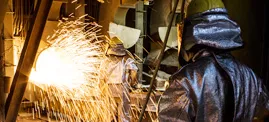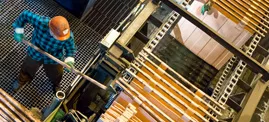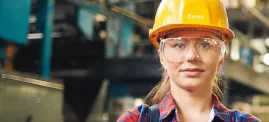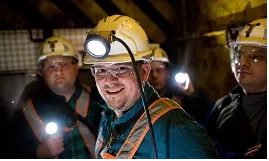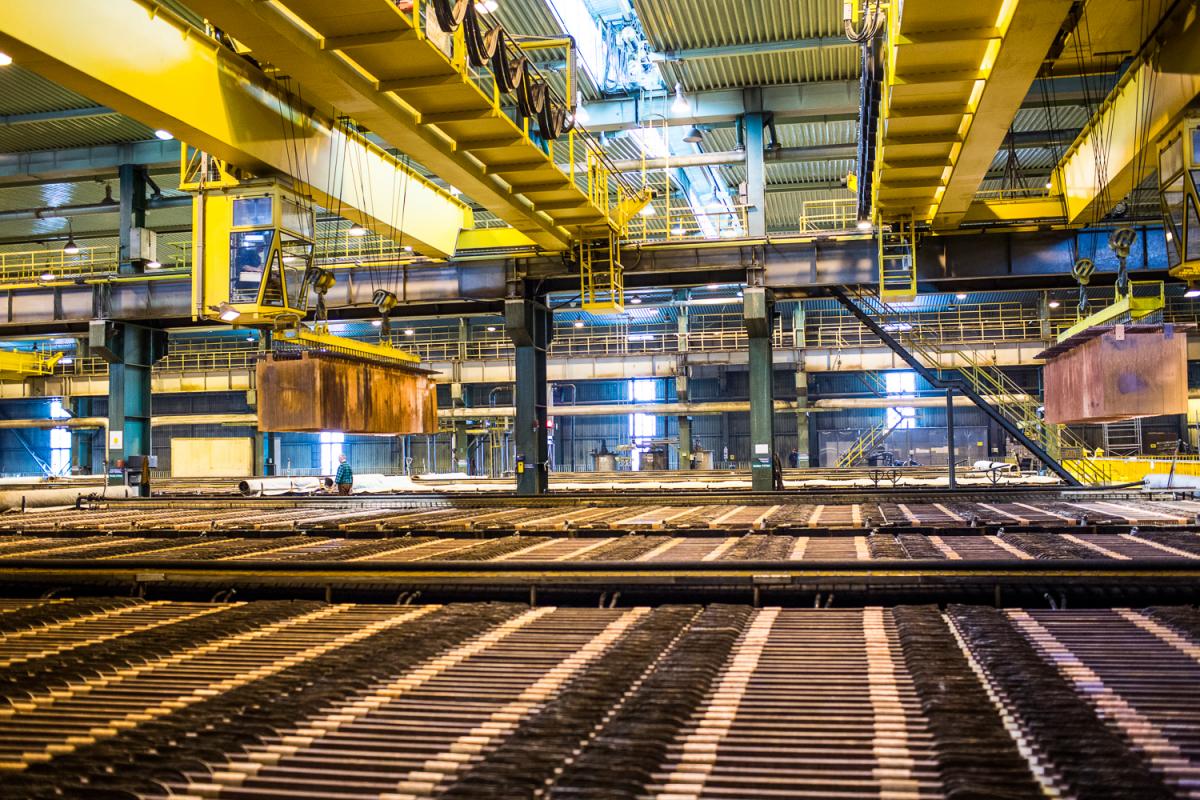
The primary products offered by the companies of the KGHM Group are concentrates, cathodes and copper wire rod.
They are products of individual stages of copper ore processing and recycling of copper scrap. For all of these products, the price benchmark (i.e. the global benchmark of copper prices for physical sales contracts of copper-bearing materials and products) is stock market quotations, with the cash settlement of the London Metal Exchange (LME) being most commonly used. Less commonly used are alternative quotations of copper on stock exchanges in New York (COMEX) and Shanghai (Shanghai Futures Exchange). Grade “A” type, with a copper content of at least 99.99% (standard BS:EN 1978:1998 - Cu-CATH-1) is quoted on the LME.
In order to be able to apply stock exchange prices to purchase/sale transactions of the products to which this quality standard is not applicable (i.e. all types of copper-bearing materials like copper concentrates, copper scrap or more processed products like copper wire rod), market participants have developed a premium and discount system, which adjusts stock quotations. It allows setting of a market price for a product which takes into account its processing stage, its physical state and chemical makeup, as well as costs of transport and insurance to an agreed delivery destination and the current availability of the metal in a given location.
Copper concentrates
Copper concentrate is a product made by processing/enriching copper ore, which usually has a relatively low metal content and is not suitable for direct metallurgical processing. Usually, copper content in concentrate varies from percentages in the teens to several tens of percent, which enables further processing in copper smelters and refineries. The cost of transporting products with a lower copper content (for example copper ore) basically eliminates them from trade in the global market (with certain exceptions), therefore it may be assumed that copper concentrate is the first product of processing copper ore that may be generally traded. As a result of metallurgical processes copper is produced as well as the by-products of processing (mainly precious metals, sulphuric acid, lead etc.).
The main participants of the concentrate markets are mines supplying the product on the market and smelters and refineries, for which the concentrates are materials for production. Trading companies also play a role on this international market, intermediating in the purchase/sale transactions and offering additional services expected by the parties.
Copper concentrates require processing into refined copper, which leads to incurring processing costs and the incomplete recovery of metals in individual production stages. Therefore, the transaction price should have a set of discounts as compared to quoted prices for refined copper. The benchmark of these discounts (for TC/RC) is determined during negotiations with the main producers of concentrates (Freeport McMoRan, Antofagasta) and their customers (mainly Chinese and Japanese smelters and refineries).
Companies of the KGHM Group participate in the copper concentrate markets mainly by selling concentrate from Sierra Gorda in Chile and from Robinson in the USA. Occasionally, KGHM Polska Miedź S.A. also sells copper concentrate produced by the Lubin, Rudna and Polkowice-Sieroszowice mines. At the same time the Company purchases copper concentrates from the market with characteristics suitable for more efficient utilisation of the production capabilities of the smelters and refineries in Poland.
Copper cathodes
Refined copper in the form of copper cathodes is the end product of the smelting and refining processes, to which the copper-bearing materials are subjected (including concentrates, copper blister, anodes and copper scrap).
Primary commodities exchanges (including the LME and SHFE) enable cathodes to be registered (Grade A type, with a copper content of at least 99.99% under the BS:EN 1978:1998 - Cu-CATH-1 standard), and therefore their trading on exchanges and through LME-approved warehouses. The copper cathodes produced by KGHM are registered on the LME as well as on SHFE, under the brands: HML, HMG-B and HMG-S. Unregistered cathodes are also traded on the physical market (for example those that do not meet quality parameters or the minimal yearly production conditions set by exchanges). One example of unregistered cathodes produced by KGHM are those from the Carlota mine.
The main participants in the cathodes market are mining and smelting companies producing copper in the form of cathodes and wire rod plants and other companies engaged in copper processing, which use cathodes to produce wire rod, other rods, flat bars, pipes, sheets and belts. Similarly as in the case of copper concentrates, trading companies and financial institutions intermediating in the cathodes trade also participate in the market.
It is a standard practice on the Grade “A” copper cathodes market to add a producer’s premium to the prices set by global exchanges. Its level allows the producer to cover the cost of transport and insurance to the agreed delivery destination, and it also includes the premium for quality (of a given cathodes brand) and supply-demand situation on a given market.
The companies of the KGHM Group participate on the cathodes market mainly by selling cathodes from the Group’s Polish assets. The Głogów Copper Smelter and Refinery produces cathodes of the HMG-S and HMG-B brands, while the Legnica Copper Smelter and Refinery produces cathodes of the HML brand, registered on the exchanges in London (LME) and in Shanghai (SHFE). Moreover, the KGHM Group offers cathodes produced through the leaching and electrowinning process (SX/EW) in the Carlota mine in the United States.
Copper wire rod
Copper wire rod is manufactured in the continuous process of melting, casting and drawing in plants processing refined copper. The material used in this part of the production cycle is mainly copper in the form of cathodes, although higher-grade copper scrap may also be used.
Wire rod is a half-finished product used in the production of single wires and multiple wires used to produce conducting vines in cables and electric cables (for example: enamelled cable, car cables, power cords etc.). Similarly as for copper cathodes, trading companies are also involved in the physical trading of copper wire rod, apart from companies with wire rod plants and cable-producing companies.
The wire rod market, due to the quality characteristics of the product, is more of a local market, which also means that it is highly competitive and demanding.
Wire rod’s price structure, apart from the copper quotations on the London Metals Exchange, also includes a producer’s fee (added to cathodes) and the refining charges due to the costs of processing cathodes into wire rod. KGHM Polska Miedź S.A. produces wire rod in the Cedynia Wire Rod Plant in Orsk.

